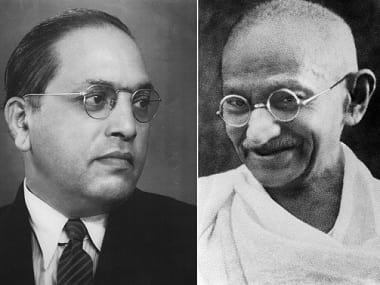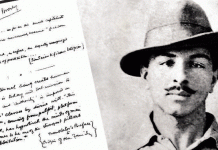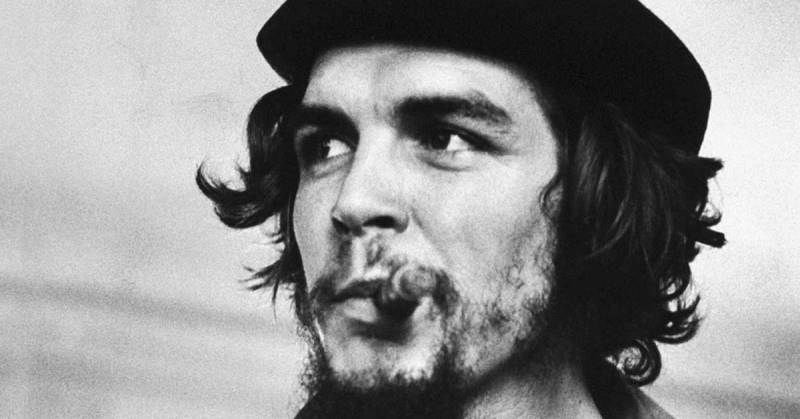One hundred years after Karl Marx, almost two-third of the world had become socialist in some form or other. Marx himself could not have anticipated the mass liberation movements against colonialism which moved from Gandhi and Bhagat Singh’s India, to the interiors of Africa and Middle-East. He was always pitching for Germany in Europe to start the revolution, and perhaps the partially industrialized nations, like England, which had so obscenely bloated after centuries of parasitic fleecing and plunder of the ‘native’ economies, as in India, even while the slave trade was unleashed by America, Portugal and Spain, with majority of the slaves from Africa perishing on the sea – unable to survive the dehumanized conditions in which they were forcibly deported as slave labour.
Lenin himself was pitching for a German revolution, even after the Bolshevik Revolution of 1917, which ignited the world with a spark which spread on the wings of human emancipation against slavery, exploitation and the unbridled greed of the feudals and capitalists of the West. No wonder, his newspaper in exile was called ‘Iskra’ — the spark.
Marx did not anticipate a revolution in Russia, with its undeveloped working class, or the Long March in China, led by the poorest peasants. His theory of class struggle and the overthrow of the old order, and the making of a new socialist order from the ruins of the bourgeois empire, was based on the formation of the working class in industrial societies. Socialism, according to him, would emerge from the ruins of primitive communism, monarchy and feudalism, bourgeois colonial capitalism, and finally, revolution based on class struggle. This will be a new form of primitive communism – a society of shared abundance. From each according to his ability, to each according to his need. Where you can paint in the morning, work in the afternoon, listen to music or write poetry in the evening, and sing and dance with friends and beloveds till the early hours of dawn. This would be the celebration of qualitative time, not quantitative time and alienated labour and time and space.
This is because no order would change by itself. There is no transformation of the inner soul, or the self-realisation of the inner self, when it comes to the short, nasty, addictive and brutish order of oppression and exploitation. The proletariat and the progressive sections of society, including students, the middle class and the intelligentsia, will have to organize and mobilize, and fight it out in the trenches to usher in the change. As EP Thompson said, a class ‘in itself’ becomes a class ‘for itself’.
That is how Lenin and Mao, reinterpreted Marx, according to the indigenous principles and paradigms of their own inherited and unique societies. That is how Fidel Castro and Che Guevara reinterpreted Marxism-Leninism and Maoism, even perhaps Rousseau’s ‘Social Contract’ (which Castro liked in his young days) into a typically Latin American form of guerilla war. That is how, today, Latin America has tried to usher in a revolution through the ballet, unlike the revolution through the bullet, which was the earlier principle of radical change.
Two hundred years later, even as right-wing fascism haunts and stalks India and many other parts of the world, including parts of Europe and America, Marx comes back, not as an economic reductionist, but as a philosopher of liberation, whereby both knowledge and action liberates, like the synthesis of theory and praxis. He posits synthesis, not one-dimensional and unilateral ideologies. He celebrates the hundred schools of thought, and the one hundred flowers which must bloom, despite one hundred years of solitude. He posits rebellion as a pre-condition of the social context, which Albert Camus redefined, as an existential a priori in an oppressive social paradigm. He compels us to reinterpret the racist shackles, as Franz Fannon did so beautifully in his epical book, ‘The Wretched of the Earth’.
Wrote Jean Paul Sartre in his sublime and sparkling foreword to this book that a day will arrive one day when the blacks, who were all slaves, would have liberated themselves from the shackles of white domination, false consciousness and brutalized history. They would sit around a fire and tell each other stories which have been buried and ravaged. They will revive their original stream of consciousness and oral and folk traditions. And if a white man comes around the fire and listens to them, they would not attack him, or, abuse him. They would simply ignore him. He would not matter anymore because history has been finally re-written by the blacks themselves.
That is why, Marx is alive in Erich Fromm’s ‘Art of Loving’, as much as in Herbert Marcuse’s ‘Essay on Liberation’, and Walter Benjamin’s ‘Illuminations’. He has walked with the Russian soldiers who liberated Berlin from Adolf Hitler’s Holocaust, even as 20 million Russians sacrificed their lives in the war against fascism. He was with the poorest peasants in the mountains of China, chasing the red star over the long march. He was with Bhagat Singh, Rajguru and Sukhdev, as with other revolutionaries who were given kalapani, or tortured to death, or hanged, like Masterda – Surya Sen – leader of the Chittagong armed uprising, young Khudiram Bose, Bagha Jatin, and Ramprasad Bismil, Chandrashekhar Azad and Ashfaqullah Khan. He was also with Chandrashekhar, former JNUSU president, who was shot dead in Siwan by a mafia don in 1997, as he was with intellectual Saroj Dutta, shot in a fake encounter in Calcutta during the Naxalbari uprising.
He was also with Shankar Guha Niyogi in Chhattisgarh, where he peacefully organized the huge working class, made hospitals with Dr Punyabrata Goon and Dr Binayak Sen, among others, built schools and food security structures for the working class.
‘Sangharsh aur Nirman’ was the ethical, non-violent principle. And what was Niyogi reading that night when he was shot dead by a hired assassin of the industrialists – Lenin. And what was Bhagat Singh reading before he was taken to the gallows? Lenin.
So Marx came alive with Lenin, as much as with Mao and Fidel Castro and Che Guevara, as much as with Kalpana Dutt, Kanu Sanyal and Jangal Santhal, in different eras and in different rainbow coalitions.
Marx comes back from the Paris Commune and entered the famous campus of Sorbonne, Paris, even as the students wrote on the wall slogans which are resurrected in JNU till this day and all over university campuses: Give flowers to the rebels who failed. Society is a carnivorous flower. One pleasure has the bourgeoisie, that of degrading all pleasures. Be a realist, demand the impossible!
Marx was also there when JNU students fought against the Tiananmen Square Massacre in Beijing, in June, 1989. He was there in the students’ petition pasted on the walls of the Chinese embassy in Delhi. He was there during that mass uprising for democracy and freedom, with thousands of students sitting on a Gandhian fast at the Tiananmen Square. And what were they playing on the loudspeaker? Beethoven’s ‘Ode to Joy’. And the great anthem of the international working class movement – the ‘Internationale’.
Above all, Marx is there to teach us about love, instinct, sensuality, beauty, emancipation, the great zone of possibilities in the human civilization, learning and unlearning, the art of liberation. In the ‘Economic and Philosophic Manuscript’, he wrote, that a man who cannot create love, cannot give love, he is an impotent being. An unobjective being.
That is why, the liberated black people sitting in a circle around a fire, have already found the most precious feeling and sensibility. The comradeship of love. And the love of comradeship.
Amit Sengupta – a Noted Writer and Columnist, lives in Delhi.
***











